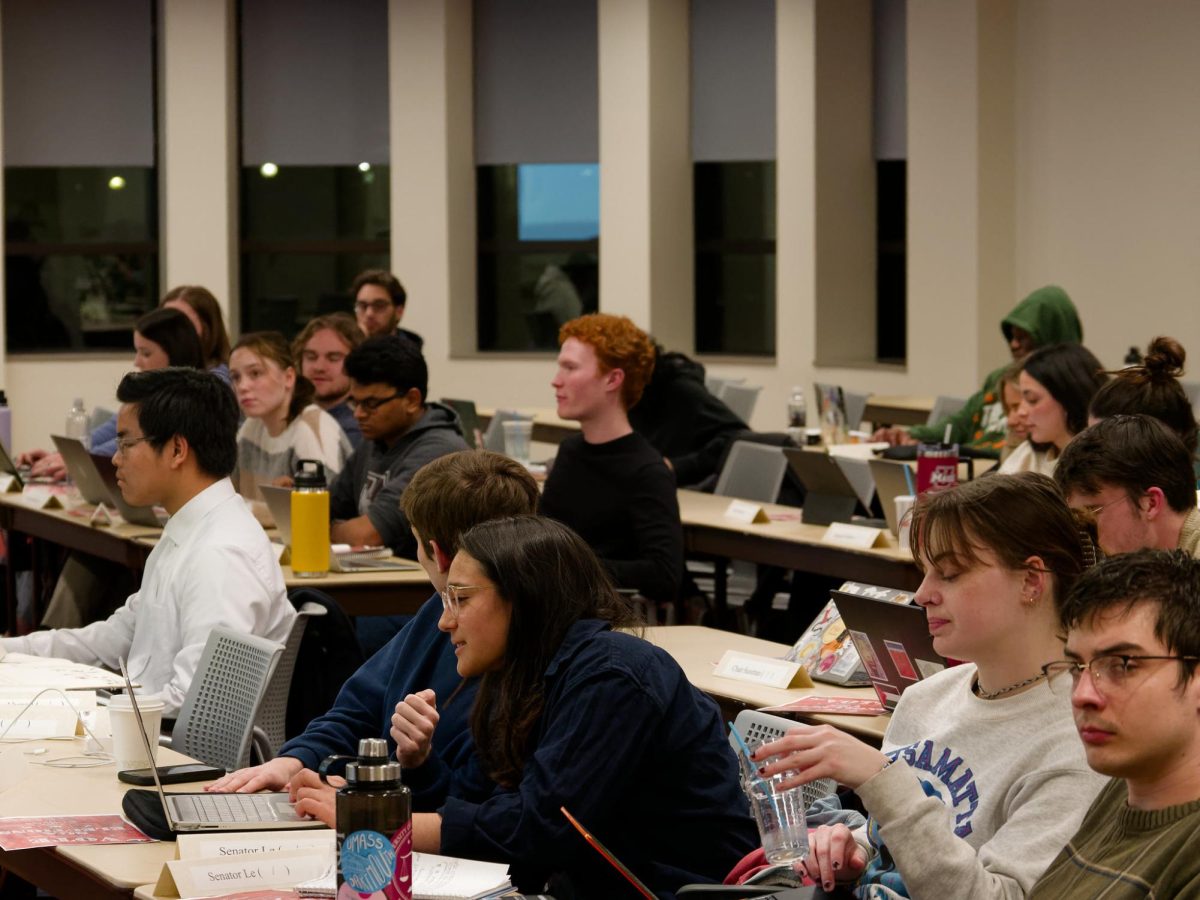
Katie Diamond is a comic artist determined to break down societal norms about gender and sexuality through her political artwork and erotic images.
“Comics is a way of activism and education,” she said.
Tuesday night, Diamond treated University of Massachusetts to a lecture titled “No Straight Lines: Drawing Gender and Sexuality in Comics” at the Stonewall Center at Crampton Hall.
Comics are a graphic way of describing gender and sexuality, said the illustrator and artist.
“[Its] language is the key to how we describe ourselves and our sexuality,” said the self-proclaimed “queer, erotic comic artist.”
Unlike novels, comics show stories instead of telling them, according to Diamond. That makes comics a more effective medium of teaching people, especially children, about gender and sexuality, she said.
She gave the example of Disney characters like Mickey and Minnie Mouse. She said these prominent Disney characters indirectly emphasize that gender is an important social aspect.
Mickey, although often depicted as a masculine character, is “gender-neutral in a very fascinating way,” Diamond said. But to put emphasis to his masculinity, Diamond said Mickey is often depicted in a masculine stance and with his female counterpart Minnie, who arguably possesses feminine characteristics.
“Minnie is essentially a Mickey in drag,” Diamond said.
She said the same applies to Donald and Daisy Duck. To emphasize Donald’s masculinity, Diamond said, Disney needed to create his female counterpart.
“They somehow managed to find a way to effeminize [Donald’s] feathers,” she said.
Yet, Diamond refused to berate Disney for these creative decisions because, she said, the company only created the characters to appeal to children.
Diamond said the effectiveness of comics heavily relies on people’s tendency to be narcissistic. Because they can’t focus enough on their own features, people tend to find themselves in everything that they see, she said.
“We have this compulsion to see ourselves in everything,” she said.
According to Diamond, comics portray people as simplified with general features so readers can find themselves in the characters and relate to the stories.
Diamond said popular media has helped increase children’s tolerance to homosexuality. She said characters considered to display homoerotic traits, like He-Man, have become popular and have been widely endorsed in the previous years.
Also, the number of gay comic characters has increased in recent years, Diamond said. One example is the modern Batwoman, who was written as a lesbian character in the comic “52” by DC Comics in 2006.
The number of “butch” lesbian comic depictions, however, have not increased, said Diamond. “Butch” lesbians are often made fun of and rarely portrayed positively. This is in part because the comics industry is not a female-dominated sphere, according to Diamond.
“It’s still a man’s game,” she said.
Diamond said comics should be used as a way of voicing one’s opinions about gender and sexuality, be it good or bad, and of teaching people that being gay is not a bad thing.
Ardee Napolitano can be reached at [email protected].






